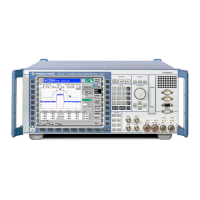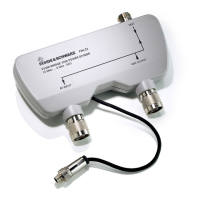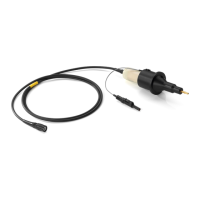Hardware Interfaces CMU
1100.4903.12 8.6 E-8
Signal lines
1. Data lines
RxD (Receive Data)
Input data.
Data transfer is bit-serial in the ASCII code, starting with the least significant bit (LSB).
TxD (Transmit Data)
Output data.
Data transfer is bit-serial in the ASCII code, starting with the least significant bit (LSB). The two
data lines RxD and TxD are a minimum requirement for data transfer. The following control
lines are necessary in addition if a hardware handshake is to be used.
2. Control and message lines
DCD (Data Carrier Detect)
active LOW.
Input; using this signal the data terminal recognizes that the modem of the remote station
receives valid data with a sufficient signal level. DCD is used to disable the receiver in the data
terminal and prevent reading of false data if the modem cannot interpret the signals of the
remote station.
DTR (Data Terminal Ready)
active LOW,
Output; with DTR, the instrument indicates that it is ready to receive data.
DSR (Data Set Ready)
active LOW,
Input; DSR indicates to the instrument that the remote station is ready to receive data.
RTS (Request To Send)
active LOW.
Output; with RTS, the instrument indicates that it is ready to receive data. The RTS line controls
whether the instrument is ready to receive data or not.
CTS (Clear To Send)
active LOW.
Input; CTS tells the instrument that the remote station is ready to receive data.
RI (Ring Indicator)
active LOW.
Input; RI is used by a modem to indicate that a remote station wants to set up a connection.
Transmission Parameters
In order to ensure error-free and correct data transmission, the parameters of the instrument and the
controller must be set identically. The parameters of the RS-232 interface can be set via the Setup -
Remote menu or the command group SYSTem:COMMunicate...

